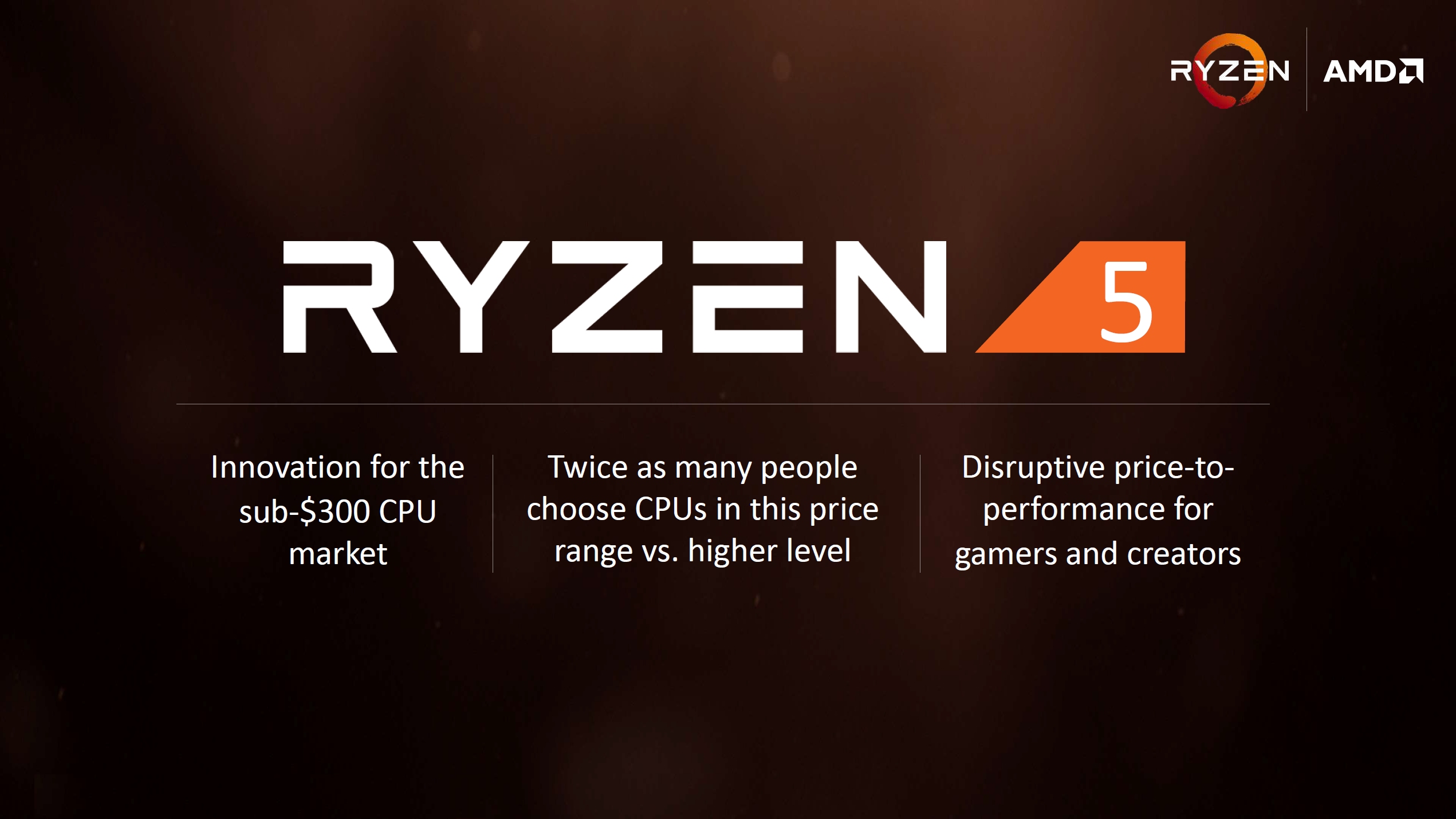
After the success of tremendous Price value of AMD's Ryzen 7 ,AMD has launched its neww Ryzen 5.The very first model of Ryzen 5 is the 1600X having 6 cores, 12-thread CPU. AMD have sicced on Intel's i5 range. It's a chip aimed to take head to head with Intel’s mid-range dominance with serious multi-threading performance and a price tag .AMD haven’t let up this year - the Ryzen processor releases have come thick and fast since the initial Ryzen 7 1800X launched.
The Ryzen 5 1600 is Based on the AMD Zen architecture, which can be comparable with Intel in terms of IPC, the Ryzen 5 1600 has six cores which is more than lots of the games can be use. Ryzen 5 CPUs offer gamers better performance to the users in terms of money the have paid. than the eight core Ryzen 7 models. With six cores and 12 threads the 1600 is approx 75% better at multi-threaded tasks than Intel's quad core i5 processors– Same priced i5-7600K, the 1600 however, has 25% lower single and 33% lower quad core performance. The 1600 has stock base/boost clock speeds of 3.2/3.6 GHz and with price of $219 includes a cooler. Assuming a modest overclock of 10% brings the 1600 within striking range of the 1600X which is the Ryzen 5. The 1600X stock base/boost clocks of 3.6/4.0 GHz but costs $30 more than the 1600 and ships without a air cooler included in the packaging. The Ryzen 5 1600 is the best value for money six core CPU we have seen to date.
Ryzen 5 versus Ryzen 7 & Intel-
By using Cinebench R15 to measure single and multi-threaded performance it gives extremely impressive figures from the Ryzen CPUs. The 1600X lays waste to the 7600K’s multi-threaded score, almost doubling it. Therefore for single-threaded workloads, the higher memory clock speed of the Core i5 results in the 1600X being 11% slower here.
The 7-Zip benchmark depicts almost same margins to what we just saw in Cinebench R15, though this is a widely used application and the gains here can actually be enjoyed by the average user. There are two tests here: one measures the performance when compressing files to an archive and another measures performance when extracting an archive.
Overclocking-
When it came to overclocking, 1600X was stable for 4.1GHz while the 1500X hit 3.95GHz. Testing with Premiere Pro the 1600X boost its performance by 9% once overclocked, making it slightly faster than the intel's Core i7-7700K and not much slower than the Ryzen 1800X.Performance Analysis-
Conclusion-
The main benefit of the 1500X over the 1400 is that it offers double the Level 3 cache, which makes little difference in gameplay performance. This is particularly true given that budget shoppers will likely pair the 1400 with a mid-range graphics card, rather than high-end graphics card. the Ryzen CPU has the advantage of overclocking support and can push all cores to around 3.7GHz, possibly even 3.8GHz, even with its little 65 watt Wraith Stealth cooler.
By comparison, building an Intel machine on the same budget would net you a $190 Core i5-7400 or $170 Core i3-7350K, with the i5 being the more cost-effective option of the two, performing as fast or faster than the overclocked 4.8GHz 7350K.




